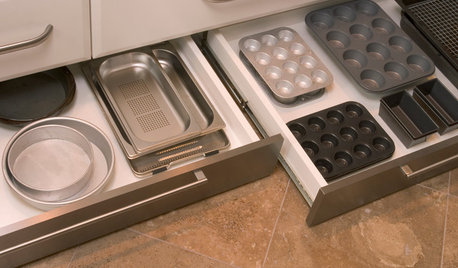445JD toe in or toe out?
butchs_hobby
16 years ago
Related Stories

GREAT HOME PROJECTSHow to Add Toe Kick Drawers for More Storage
Great project: Install low-lying drawers in your kitchen or bath to hold step stools, pet bowls, linens and more
Full Story
REMODELING GUIDESQuick Fix: Easy Toe-Kick Lighting
Here's a cost-effective way to give your kitchen or bath an unexpected glow
Full Story
VINTAGE STYLEHow to Dip Your Toe Into Retro
Singular pieces from yesteryear — like lighting, artwork or end tables — can add just the right amount of vintage to your style
Full Story
REMODELING GUIDESTile Floors Help a Hot Home Chill Out
Replace your hot-weather woes with a cool feel for toes when you treat your floors to deliciously refreshing tile
Full Story
RUGSCool Threads: Shag Rugs Stage a Comeback
See Why You May Want to Sink Your Toes Into Some Deep-Pile Carpet Again
Full Story
GARDENING AND LANDSCAPINGStrokes of Genius: 8 Stunning Lap Pools
Saving space and suited to both serious swimmers and toe dippers, lap pools can be a brilliant addition to the landscape
Full Story
KITCHEN DESIGNThe Kitchen Storage Space That Hides at Floor Level
Cabinet toe kicks can cleverly house a bank of wide drawers — or be dressed up to add a flourish to your kitchen design
Full Story
HOUZZ TOURSMy Houzz: Flashes of Industrial Style in a Modern-Rustic Dream Home
In this picture-perfect getaway, you can sleep under the stars without leaving your bed — and heated brick floors keep toes warm
Full Story
COLORCatch a Splash of Ocean Blue This Summer
Dip a toe into cobalt or take on turquoise at full blast for rooms that soothe, energize and feel as breezy as the beach
Full Story
FLOORSFloors Warm Up to Radiant Heat
Toasty toes and money saved are just two benefits of radiant heat under your concrete, wood or tile floors
Full StorySponsored



deerslayer
butchs_hobbyOriginal Author
Related Discussions
Fletchers (no toes) 'Meet and Greet'
Q
Help- Baby toes, Split rock and lithops- Water schedule- New York City
Q
help.Cabinets in today-duct in floor&no duct to toe kick register?
Q
RENO HELL - toilet flange - how far out & toe kick vent - ugh issue
Q
mownie
rustyj14
mownie
butchs_hobbyOriginal Author
bushleague
xpostech
mownie
deerslayer
mownie
deerslayer
mownie
booster
deerslayer
mownie
booster
deerslayer
booster
engine_tech
butchs_hobbyOriginal Author
mownie
butchs_hobbyOriginal Author
mownie
butchs_hobbyOriginal Author